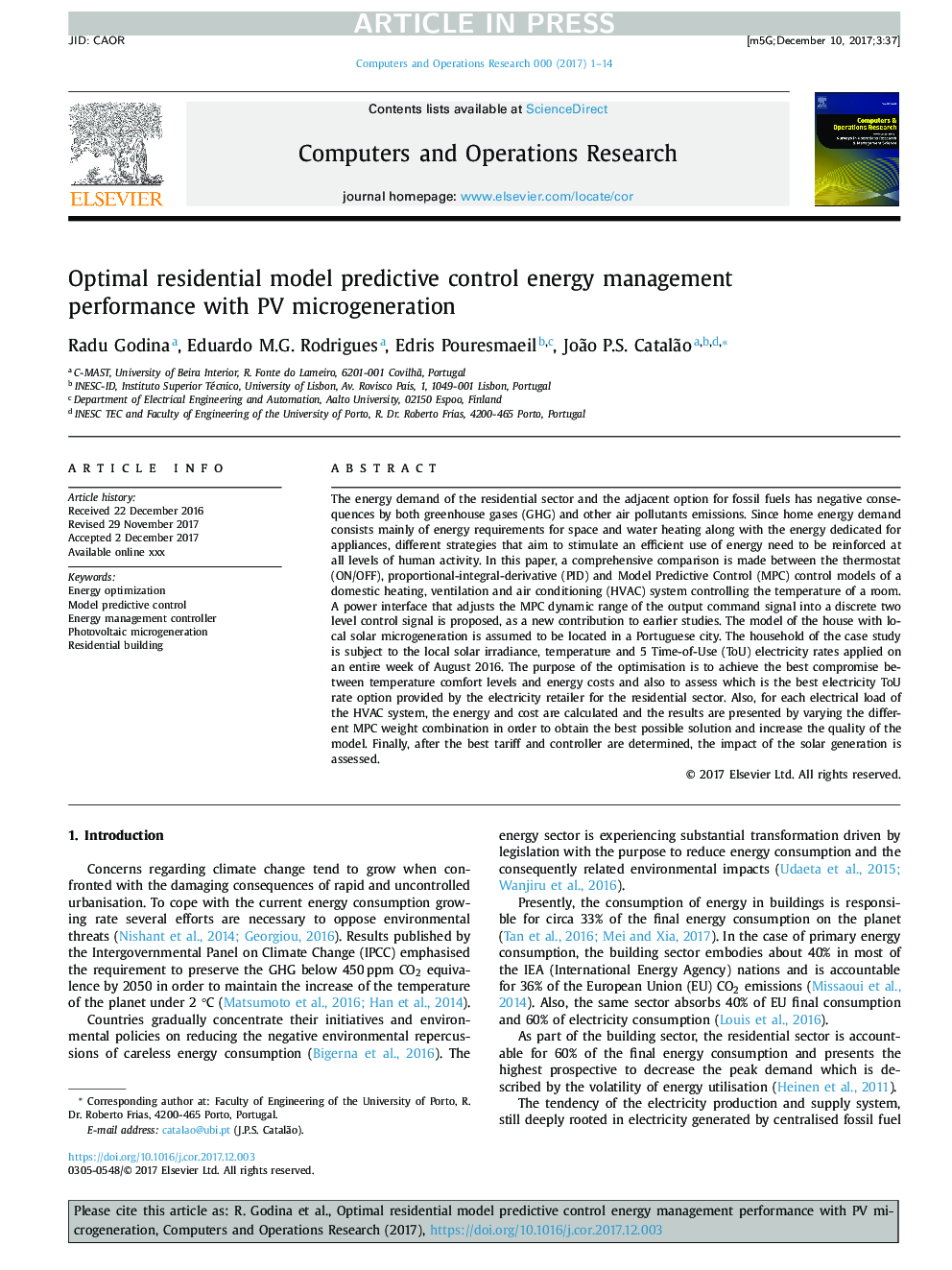| Article ID | Journal | Published Year | Pages | File Type |
|---|---|---|---|---|
| 6892595 | Computers & Operations Research | 2018 | 14 Pages |
Abstract
The energy demand of the residential sector and the adjacent option for fossil fuels has negative consequences by both greenhouse gases (GHG) and other air pollutants emissions. Since home energy demand consists mainly of energy requirements for space and water heating along with the energy dedicated for appliances, different strategies that aim to stimulate an efficient use of energy need to be reinforced at all levels of human activity. In this paper, a comprehensive comparison is made between the thermostat (ON/OFF), proportional-integral-derivative (PID) and Model Predictive Control (MPC) control models of a domestic heating, ventilation and air conditioning (HVAC) system controlling the temperature of a room. A power interface that adjusts the MPC dynamic range of the output command signal into a discrete two level control signal is proposed, as a new contribution to earlier studies. The model of the house with local solar microgeneration is assumed to be located in a Portuguese city. The household of the case study is subject to the local solar irradiance, temperature and 5 Time-of-Use (ToU) electricity rates applied on an entire week of August 2016. The purpose of the optimisation is to achieve the best compromise between temperature comfort levels and energy costs and also to assess which is the best electricity ToU rate option provided by the electricity retailer for the residential sector. Also, for each electrical load of the HVAC system, the energy and cost are calculated and the results are presented by varying the different MPC weight combination in order to obtain the best possible solution and increase the quality of the model. Finally, after the best tariff and controller are determined, the impact of the solar generation is assessed.
Related Topics
Physical Sciences and Engineering
Computer Science
Computer Science (General)
Authors
Radu Godina, Eduardo M.G. Rodrigues, Edris Pouresmaeil, João P.S. Catalão,
